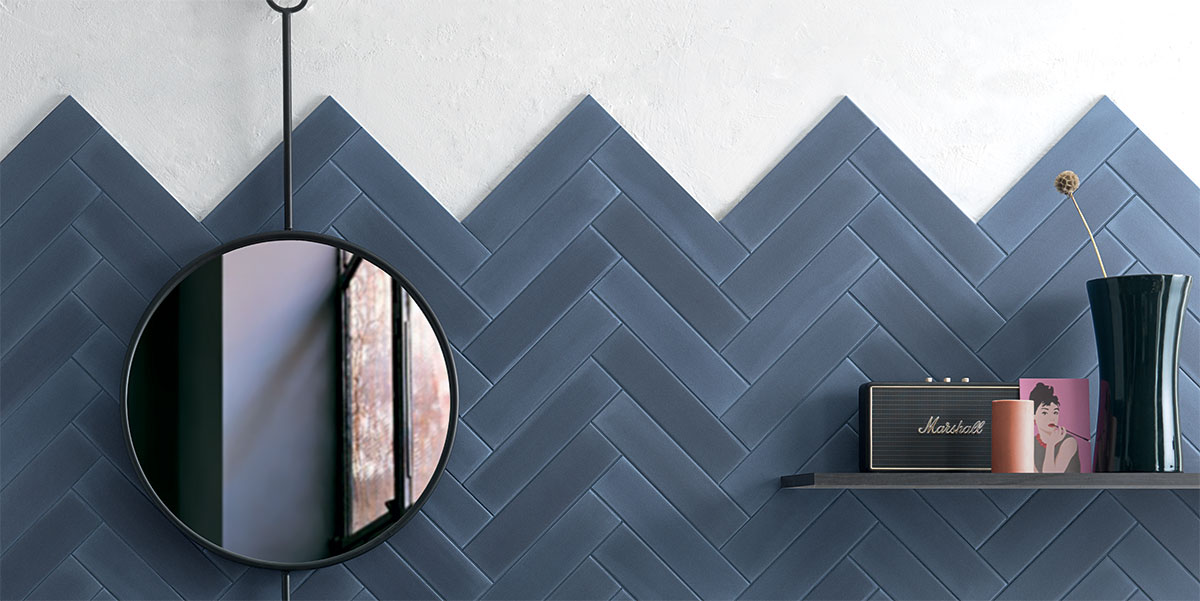

Articles
Creative Uses For Tile On Walls
Modified: October 18, 2024
Looking for creative ways to use tile on your walls? Check out our collection of articles filled with ideas and inspiration for transforming your space with tile.
(Many of the links in this article redirect to a specific reviewed product. Your purchase of these products through affiliate links helps to generate commission for Storables.com, at no extra cost. Learn more)
Introduction
Tile is a versatile and durable material commonly used for flooring. However, its potential extends far beyond just the ground. With its endless range of colors, patterns, and textures, tile can also be creatively used on walls to add style and visual interest to any space.
In this article, we will explore the various ways you can utilize tile on walls to transform your home or commercial space. From accent walls to artistic displays, tile can take your interior design to the next level.
But before we dive into the creative uses, it’s essential to understand why using tile on walls is advantageous. First and foremost, tile is resilient and easy to clean, making it a practical choice for high-traffic areas. It is also resistant to moisture, making it perfect for bathrooms and kitchens where water exposure is common. Additionally, tile provides a wide array of design options, allowing you to personalize your space and create a unique atmosphere. Whether you prefer a sleek and modern look or a rustic and textured feel, there is a tile option that will suit your aesthetic.
Now let’s explore the creative possibilities of using tile on walls!
Key Takeaways:
- Transform your living spaces with the creative uses of tile on walls, from accent walls to artistic displays. Elevate aesthetics, durability, and functionality while showcasing your unique style and taste.
- Embrace the versatility of tile on walls to create stunning focal points, protect high-traffic areas, and infuse personal expression into your home. From fireplaces to outdoor walls, unleash the potential of tile for a visually captivating and durable design.
Read more: How To Tile A Fireplace Wall
Statement of Purpose
The purpose of this article is to inspire and educate readers on the many creative uses of tile on walls. By showcasing the versatility and aesthetic appeal of tile, we aim to encourage readers to think beyond traditional applications and explore new possibilities for their interior design projects.
Our goal is to provide readers with a comprehensive understanding of the benefits of using tile on walls, including its durability, easy maintenance, and wide range of design options. By highlighting these advantages, we aim to empower readers to make informed decisions when incorporating tile into their spaces.
Furthermore, this article seeks to showcase a variety of specific uses for tile on walls, demonstrating how it can elevate the style and functionality of different areas within a home or commercial setting. From creating stunning accent walls to transforming fireplaces into focal points, readers will learn how to harness the visual impact of tile to enhance their living spaces.
We will also explore the practicality of using tile on walls in areas such as kitchens and bathrooms, where moisture resistance and ease of cleaning are essential factors to consider. By highlighting the benefits of tile in these environments, readers will gain a deeper appreciation for its functional value beyond its aesthetic appeal.
Lastly, this article will delve into more unconventional uses for tile, such as turning walls into artistic displays or incorporating tile into furniture pieces. By introducing these unique ideas, readers will be inspired to think outside the box and bring a touch of creativity to their interior design projects.
Ultimately, our aim is to provide readers with a comprehensive guide to the creative uses of tile on walls, encouraging them to reimagine their spaces and create environments that reflect their personal style and taste. Whether readers are embarking on a renovation project or simply looking to refresh the look of their home, we hope this article will serve as a source of inspiration and guidance.
Benefits of Using Tile on Walls
Using tile on walls offers a multitude of benefits that go beyond its aesthetic appeal. Here are some key advantages to consider:
- Durability: Tile is known for its durability and longevity. It can withstand wear and tear, making it an excellent choice for high-traffic areas.
- Easy Maintenance: Unlike other wall coverings, tile is easy to clean and maintain. With just a simple wipe or mop, it can be kept looking fresh and new.
- Resistance to Moisture: Tile is highly resistant to moisture, making it an ideal choice for areas prone to water exposure, such as bathrooms, kitchens, and laundry rooms. It helps prevent water damage and is easy to dry, reducing the risk of mold and mildew growth.
- Wide Range of Design Options: Tile comes in a vast array of colors, patterns, and textures, allowing for endless design possibilities. Whether you prefer a sleek and modern look or a rustic and textured feel, there is a tile option to suit your style and aesthetic.
- Enhanced Visual Appeal: Tile adds visual interest and depth to walls, creating a focal point or adding dimension to a space. It can instantly elevate the overall look and feel of a room, making it more visually appealing.
- Versatility: Tile can be used in various ways and in different areas of the home. From accent walls to backsplashes, fireplaces to bathroom walls, its versatility allows for creative expression and customization.
- Eco-Friendly Option: Many tiles are made from natural materials, such as ceramic or porcelain, which are sustainable and eco-friendly choices. They are also recyclable, reducing their environmental impact.
- Increased Property Value: Incorporating tile on walls can increase the value of a property. Its durability, longevity, and aesthetic appeal are attractive features for potential buyers or renters.
- Expression of Personal Style: Tile offers endless opportunities for self-expression. From bold and vibrant colors to intricate patterns and designs, it allows homeowners to showcase their unique style and create a personalized space.
- Long-Term Cost Savings: While tile may have a higher upfront cost compared to other wall coverings, its durability and low maintenance requirements result in long-term cost savings. Tiles are resistant to staining, fading, and chipping, reducing the need for frequent replacements.
These benefits make using tile on walls a practical and visually appealing choice for homeowners and designers alike. Whether you’re looking to update a specific area or transform an entire space, tile offers a myriad of advantages that can enhance the functionality and aesthetics of your home.
Accent Wall
An accent wall is a popular design element that adds visual interest and depth to a room. It serves as a focal point and can completely transform the overall look and feel of a space. Using tile on an accent wall is an excellent way to create a stunning feature that grabs attention.
When choosing tile for an accent wall, consider the color, texture, and pattern that will complement the existing décor. Opting for a bold and vibrant tile color can instantly add drama and personality to the room, while a more subdued and neutral color can create a sense of elegance and sophistication.
The type of tile also plays a role in the overall design. Ceramic or porcelain tiles are popular choices due to their durability and wide range of design options. However, glass tiles or mosaic tiles can add a touch of glamour and create a mesmerizing effect when reflecting light.
An accent wall can be created in any room, from the living room and bedroom to the dining area or even the bathroom. It is particularly effective when used behind a focal point, such as a fireplace or a bed, as it draws attention to the area and creates a sense of balance and harmony within the space.
Additionally, an accent wall can also be used to visually separate different areas within an open-concept layout. For example, in a studio apartment, using tile on one wall can define the living area and create a sense of division without the need for physical barriers.
Overall, an accent wall using tile is an effective way to add character and style to any room. It provides the opportunity to showcase your personal taste and creativity while making a bold statement. Whether you choose a vibrant mosaic pattern or a sleek monochromatic design, an accent wall with tile will undoubtedly elevate the aesthetic appeal of your space.
Backsplash
A backsplash is a practical and decorative feature in kitchens and bathrooms. It is located behind sinks, stoves, and countertops to protect the walls from water, food splatters, and other stains. However, a backsplash is not just about functionality—it also presents an opportunity to add style and personality to these spaces.
Using tile as a backsplash material offers numerous advantages. Tiles are easy to clean, making them perfect for areas prone to spills and stains. They are also moisture-resistant, ensuring that the walls behind sinks and countertops remain protected from water damage. Additionally, tiles are highly durable, ensuring that the backsplash will withstand the daily wear and tear of cooking and other activities.
When it comes to choosing the right tile for a backsplash, there are endless options available. You can opt for a simple and classic subway tile for a timeless look or experiment with vibrant colors and intricate patterns for a more daring design. The choice of tile can be influenced by the overall style of the kitchen or bathroom, whether it’s modern, rustic, or traditional.
Not only does a tile backsplash offer practicality and protection, but it also adds visual interest and becomes a focal point in the room. The right tile can complement and enhance the other design elements in the space, tying everything together harmoniously. A well-designed backsplash can elevate the overall aesthetic appeal of the kitchen or bathroom, making it more visually appealing and inviting.
Furthermore, a tile backsplash allows for creative expression and customization. With intricate patterns, mosaic designs, or even custom tile artwork, you can showcase your personal style and make a bold statement in your kitchen or bathroom. This gives you the opportunity to turn a functional aspect of the space into a stunning design feature that reflects your individuality.
Whether you choose a classic and understated tile or opt for a bold and artistic design, a tile backsplash is a practical and visually pleasing choice for elevating the style of your kitchen or bathroom. It not only protects the walls but also adds a touch of personality and charm to the space, making it truly unique.
Read more: What Are Two Creative Uses For A Brick?
Fireplaces
A fireplace is a focal point in any home, providing warmth, comfort, and ambiance. Adding tile to the fireplace surround can enhance its aesthetic appeal and create a stunning visual impact. Whether you have a traditional wood-burning fireplace or a modern gas fireplace, tile can elevate its design and transform it into a captivating feature.
When it comes to choosing tile for a fireplace surround, there are various options to consider. Natural stone tiles, such as marble, travertine, or slate, can provide a classic and sophisticated look. Porcelain or ceramic tiles offer endless design possibilities, with options ranging from sleek and modern to textured and rustic. Glass tiles can add a touch of glamour and create a mesmerizing effect when reflecting the flickering flames.
The tile can be used to cover the entire fireplace surround or be incorporated as an accent. A full tile surround creates a seamless and cohesive look, especially when complementing the color scheme and style of the room. On the other hand, using tile as an accent, such as a border or a decorative pattern, can add visual interest and become a focal point within the space.
Furthermore, the tile can extend beyond just the surround and be used to cover the hearth or even the entire wall above the fireplace. This creates a dramatic and cohesive design that ties the fireplace into the overall aesthetic of the room.
Using tile on a fireplace surround offers practical benefits as well. Tiles are heat-resistant, making them a safe and durable option for the high temperatures generated by the fireplace. They are also easy to clean and maintain, ensuring that the fireplace continues to look fresh and beautiful over time.
The addition of tile to a fireplace brings a sense of luxury and style to the space. It can turn a simple fireplace into a stunning architectural feature that becomes the centerpiece of the room. Whether you choose a classic design with timeless appeal or a bold and contemporary approach, using tile on a fireplace allows for customization and personal expression.
Overall, incorporating tile into your fireplace design creates a focal point that enhances the overall aesthetics and ambience of your space. It adds depth, texture, and visual interest, making your fireplace a true work of art that brings comfort and beauty to your home.
Bathroom Walls
The bathroom is a space where functionality and style come together. By using tile on the bathroom walls, you can create a visually stunning and practical environment. Tiles are an ideal choice for bathroom walls due to their durability, moisture resistance, and ease of cleaning.
One of the main benefits of using tile on bathroom walls is its ability to withstand water and moisture. Bathrooms are high-moisture areas, especially near the shower, bathtub, and sink. Tile acts as a protective barrier, preventing water from seeping into the walls and causing damage. This moisture resistance also helps to prevent the growth of mold and mildew, ensuring a safer and healthier bathroom environment.
Additionally, tile allows for easy maintenance and cleaning. Unlike painted walls, tiles can be wiped clean with water and mild soap, making it a hygienic and low-maintenance option. This is particularly important in bathrooms where cleanliness is crucial.
When it comes to design, tile offers limitless possibilities for creating a beautiful and customized space. From sleek and modern to colorful and patterned, there is a tile style to match every aesthetic preference. Neutral tones and minimalist designs can create a serene and spa-like atmosphere, while bold and vibrant patterns can add a playful and energetic touch.
Using different tile shapes and sizes can also create visual interest and texture on the bathroom walls. From classic subway tiles to hexagonal or mosaic patterns, the variation in tile arrangements can add depth and character to the space. Consider using accent tiles to create focal points or borders to define specific areas within the bathroom.
Furthermore, tiles can be used to create feature walls or highlight specific elements in the bathroom. For example, a tile accent wall behind the vanity or bathtub can create a striking visual impact and elevate the overall design. Incorporating tile on the walls also allows for seamless integration with other bathroom fixtures, such as shower niches or recessed shelving.
Whether you choose to cover all the walls in tile or create a specific focal point, using tile on bathroom walls adds style, functionality, and durability to this important space. It allows for personal expression and customization, transforming the ordinary into an extraordinary sanctuary.
Consider using tile on walls in unexpected places, such as the ceiling, fireplace surround, or as a decorative accent in a built-in shelving unit. This can add visual interest and a unique touch to your space.
Kitchen Walls
When it comes to kitchen design, the walls play a significant role in creating a visually appealing and functional space. Tile can be a game-changer for kitchen walls, providing style, durability, and easy maintenance.
One of the main benefits of using tile on kitchen walls is its ability to withstand the rigors of cooking. Tiles are heat-resistant, making them ideal for the area behind stoves and ovens where heat may be generated. They are also highly resistant to stains and splatters, making them easy to clean and maintain. This is especially important in areas prone to food prep, such as behind the sink or near the countertop.
The design possibilities with tile for kitchen walls are virtually endless. From classic subway tiles to mosaic patterns or intricate designs, the options allow for creativity and customization. The choice of tile can complement the overall kitchen style, whether it’s modern, farmhouse, or industrial.
Using tile on kitchen walls can add a touch of color and personality to the space. Bold and vibrant tiles can create a statement wall and become the focal point of the kitchen. Alternatively, neutral tones can create a more understated and elegant backdrop for other design elements. It is crucial to consider the existing color palette and design scheme to ensure a cohesive and harmonious look.
A tile backsplash is a popular option for kitchen walls. It not only protects the walls from stains but also provides an opportunity to introduce texture and pattern. The backsplash can be extended to cover the entire wall behind the countertops and even up to the upper cabinets, creating a cohesive and visually pleasing look.
Another creative use of tile on kitchen walls is to create a decorative and functional feature. For example, using tile to create a chalkboard wall can serve as a space for grocery lists, recipes, or daily reminders. It adds a unique element to the kitchen while ensuring practicality.
Overall, using tile on kitchen walls offers both aesthetic appeal and practical benefits. It adds visual interest, protects the walls, and allows for customization and personal expression. Whether you prefer a sleek and modern look or a cozy and rustic feel, incorporating tile on kitchen walls can transform the space into a stunning culinary haven.
Outdoor Walls
When it comes to transforming your outdoor living space, don’t overlook the impact that tile can have on your outdoor walls. Using tile on exterior walls can elevate the aesthetics of your outdoor area, transforming it into an inviting and visually pleasing space.
One of the main advantages of using tile on outdoor walls is its durability. Tiles are designed to withstand various weather conditions, including rain, snow, heat, and UV exposure. This makes them an excellent choice for withstanding the elements and maintaining their beauty over time.
Tile can also enhance the overall design and style of your outdoor area. With a wide range of colors, patterns, and textures available, you can choose a tile that complements the architectural style of your home and creates a seamless transition from indoor to outdoor living spaces.
Using tile on outdoor walls can add a touch of elegance and sophistication. Whether you opt for a sleek and modern design, a natural stone look, or a mosaic pattern, the tile can elevate the space and create a visually captivating backdrop.
Additionally, tile is an easy-to-clean and low-maintenance option for outdoor walls. It resists dirt, mold, and mildew, making it simple to keep your outdoor space looking fresh and clean. With regular cleaning using a hose or pressure washer, your tile walls will continue to shine and impress for years to come.
Outdoor walls can be used to create privacy screens or to define different areas within your outdoor living space. By utilizing tile on these walls, you can incorporate beauty and functionality into your outdoor design. Consider incorporating accent tiles or different tile sizes to add visual interest and create focal points.
Moreover, incorporating tile on outdoor walls can extend the style and continuity from your indoor space to the outdoors. By choosing a tile that complements the interior design, you can create a seamless flow and a cohesive look throughout your entire property.
Whether you’re renovating your patio, creating an outdoor kitchen, or revamping your garden walls, using tile on outdoor walls can take your outdoor living experience to the next level. It not only adds beauty and durability but also helps create a harmonious and inviting space that you and your guests will enjoy for years to come.
Read more: Creative Uses Of Wallpaper In Any Room
Entryway Walls
The entryway of your home is the first impression guests have when they step through your door. Using tile on the entryway walls can enhance the style, durability, and functionality of this important space.
One of the primary benefits of using tile on entryway walls is its durability. Entryways often experience heavy foot traffic, making it essential to choose a wall covering that can withstand the wear and tear over time. Tiles are highly durable and can handle the constant flow of people coming in and out of your home.
Tile also offers a wide range of design options, allowing you to make a bold statement or create a subtle and inviting atmosphere. From neutral colors to intricate patterns, there is a tile for every design preference. You can choose tiles that complement the overall style of your home or use them to create a distinct and eye-catching feature in the entryway.
Using tile on entryway walls can elevate the aesthetics of the space and create a lasting impression. You can opt for a sleek and modern look with monochromatic tiles or go for a more rustic and textured feel with stone or mosaic tiles. Consider incorporating accent tiles or creating a pattern to add visual interest and customize the space to reflect your personal style.
Tile is also a practical choice for entryway walls when it comes to cleaning and maintenance. It’s easy to wipe down and keep clean, ensuring that your entryway always looks fresh and welcoming. Tiles are also resistant to stains and moisture, making them an excellent choice for the walls near the front door.
Additionally, using tile on entryway walls can help define the space and create a sense of arrival. By incorporating tile, you can visually separate the entryway from the rest of your home and create a distinct area that sets the tone for the rest of your interior design.
Finally, entryway walls can also be an opportunity to incorporate functional elements. For example, you can use tiles with built-in hooks or shelves to hang coats, hats, or keys. This not only adds functionality to the space but also contributes to the overall design and organization of your entryway.
By using tile on the entryway walls, you can create a visually stunning and durable space that makes a lasting impression. Whether you choose a minimalist design or a more elaborate pattern, the tile will enhance the aesthetics and functionality of your entryway, setting the stage for the rest of your home.
Artistic Displays
Tile is not just limited to functional purposes; it can also be used to create stunning artistic displays on walls. Whether you’re a lover of contemporary art or looking for a unique way to express your creativity, using tile as an artistic medium can bring a new dimension to your space.
One of the key benefits of using tile for artistic displays is its versatility. With a wide range of colors, shapes, and sizes available, you can create intricate and eye-catching designs. Tiles can be arranged in various patterns, such as mosaics or geometric shapes, to form captivating visual compositions.
Tile allows you to explore different artistic styles and techniques. You can opt for a minimalist approach with clean lines and simplicity, or embrace a more intricate and detailed design. The possibilities are endless, and you can customize your artistic display to match your personal aesthetic.
Using tiles for artistic displays also provides durability and longevity. Tiles are resistant to fading, cracking, and damage, ensuring that your artwork remains intact and vibrant for years to come. They are also easy to clean and maintain, preserving the beauty of your artistic creation.
Not only can tile be used to create standalone artistic displays, but it can also be combined with other decorative elements. For example, you can incorporate tile artwork into larger murals or mixed-media installations, combining different materials and textures for a truly unique and captivating piece.
Artistic displays using tile can be incorporated into various areas of your home or commercial space. They can serve as focal points in living rooms, dining areas, or hallways, sparking conversation and adding a distinctive touch to the overall design.
In addition, tile can be used to create custom art pieces, such as tile sculptures or relief designs, which add a three-dimensional aspect to your artistic display and further enhance the visual impact.
With its versatility, durability, and endless design possibilities, tile is an excellent medium for creating artistic displays on walls. It allows you to express your creativity, infuse personality into your space, and transform a plain wall into a bold and captivating art installation.
Headboard
When it comes to bedroom design, the headboard plays a crucial role in creating a focal point and adding personality to the space. Using tile as a headboard material can bring a unique and stylish element to your bedroom, transforming it into a stunning sanctuary.
Using tile for a headboard offers a multitude of design possibilities. Whether you want to create a sleek and modern look or a rustic and textured feel, there is a tile option to suit your style. The versatility of tile allows you to customize the headboard to match the overall aesthetic of your bedroom.
You can choose from various tile materials, such as ceramic, porcelain, or natural stone, each offering its own unique character and visual appeal. From neutral tones to vibrant colors, the right tile choice can become a striking focal point in the room.
Another advantage of using tile for a headboard is that it creates an easy-to-clean and low-maintenance surface. Unlike fabric or upholstered headboards that can collect dust or require regular cleaning, a tiled headboard can be easily wiped down and kept looking fresh and beautiful.
Tile can be installed directly on the wall behind the bed or used to create a freestanding headboard piece. For a sleek and seamless look, consider installing oversized tiles or creating a clean-lined design. On the other hand, mosaic tiles or smaller tile arrangements can add texture and create a visually interesting and intricate headboard.
To create a cohesive design, you can extend the tile from the headboard onto adjacent walls or incorporate tile accents in other areas of the bedroom. This helps to tie the design elements together and create a harmonious and visually pleasing space.
By using tile as a headboard, you can make a statement and add a touch of luxury to your bedroom. It gives you the opportunity to showcase your unique style, whether it’s with a bold and vibrant tiled pattern or a more subtle and understated design.
Overall, a tiled headboard adds depth, character, and a touch of elegance to your bedroom. It becomes a focal point that reflects your style and taste, creating a welcoming and visually appealing space to retreat and unwind.
Shelving Unit
Shelving units are not only practical storage solutions but also offer an opportunity to showcase your personal style. Using tile to enhance a shelving unit can elevate its design, making it a visually striking and functional piece in any room.
One of the main benefits of using tile on a shelving unit is that it adds texture and visual interest. By incorporating tile on the backing or sides of the shelves, you can create a stunning backdrop that enhances the items on display. The tile can provide a pop of color, create a pattern, or add depth to the shelving unit.
Tile also offers durability and ease of maintenance, ensuring that your shelving unit remains in excellent condition over time. With its resistance to scratches, stains, and moisture, tile is an ideal material for shelving units that may be subjected to frequent use or located in areas prone to spills.
When it comes to design options, the choices are vast. You can opt for a uniform look with tiles in the same color and pattern, or mix and match different tiles for a more eclectic feel. The choice of tile can complement the overall style of the room or act as a statement piece in its own right.
In addition to the backing, tiles can also be used to create decorative accents on the sides or front of the shelving unit. Consider incorporating tiles with different textures or shapes to add visual interest and create a unique focal point.
A tiled shelving unit can be incorporated in various rooms, such as the living room, bedroom, or even the kitchen. It not only provides a functional storage solution but also becomes a stylish and eye-catching feature in the space.
Additionally, a tiled shelving unit allows for customization and personalization. You can choose tiles that reflect your personal style and taste, creating a piece that is truly unique to your home. It can also be a fun DIY project, allowing you to explore your creativity and create a custom-designed shelving unit.
By using tile on a shelving unit, you can transform it into a work of art that combines functionality with style. Whether you opt for a sleek and minimalist design or a bold and vibrant mosaic, the tiled shelving unit will become a focal point that showcases your personality while providing a practical storage solution.
Conclusion
Using tile on walls goes beyond its traditional use on floors and opens up a world of creative possibilities. From accent walls to backsplashes, fireplaces to bathroom walls, kitchen walls to outdoor walls, and even entryway walls, using tile can enhance the aesthetic appeal, durability, and functionality of these spaces.
The benefits of using tile on walls are numerous. It offers durability, easy maintenance, and resistance to moisture. With a vast range of design options, tile allows for personal expression and customization, enabling you to create a space that reflects your unique style and taste.
Tile can transform a plain wall into a stunning focal point, whether by creating an accent wall or incorporating tile in artistic displays. It elevates the visual appeal of fireplaces, adding a touch of luxury and style to these cozy areas. In bathrooms, tile provides protection from moisture while enhancing the overall design and creating a spa-like atmosphere. In kitchens, tile backsplashes not only protect walls from stains but also add beauty and customization to the space.
Using tile on outdoor walls can endure the elements while transforming outdoor living spaces into inviting and visually pleasing areas. And for the entryway, tile enhances durability and defines the space, creating a stylish and functional area that sets the tone for your home.
Lastly, tile can be used in unique ways, such as creating artistic displays or incorporating it into headboards and shelving units. These creative applications allow for self-expression and customization, making a bold statement and adding a touch of elegance to any room.
In conclusion, tile is a versatile and durable material that can be creatively used on walls to enhance the overall aesthetics and functionality of any space. Its wide range of design options, durability, and easy maintenance make it an ideal choice for homeowners and design enthusiasts alike. So, go ahead and explore the creative uses of tile on walls to bring your vision to life and transform your living spaces into stunning and inviting environments.
Frequently Asked Questions about Creative Uses For Tile On Walls
Was this page helpful?
At Storables.com, we guarantee accurate and reliable information. Our content, validated by Expert Board Contributors, is crafted following stringent Editorial Policies. We're committed to providing you with well-researched, expert-backed insights for all your informational needs.
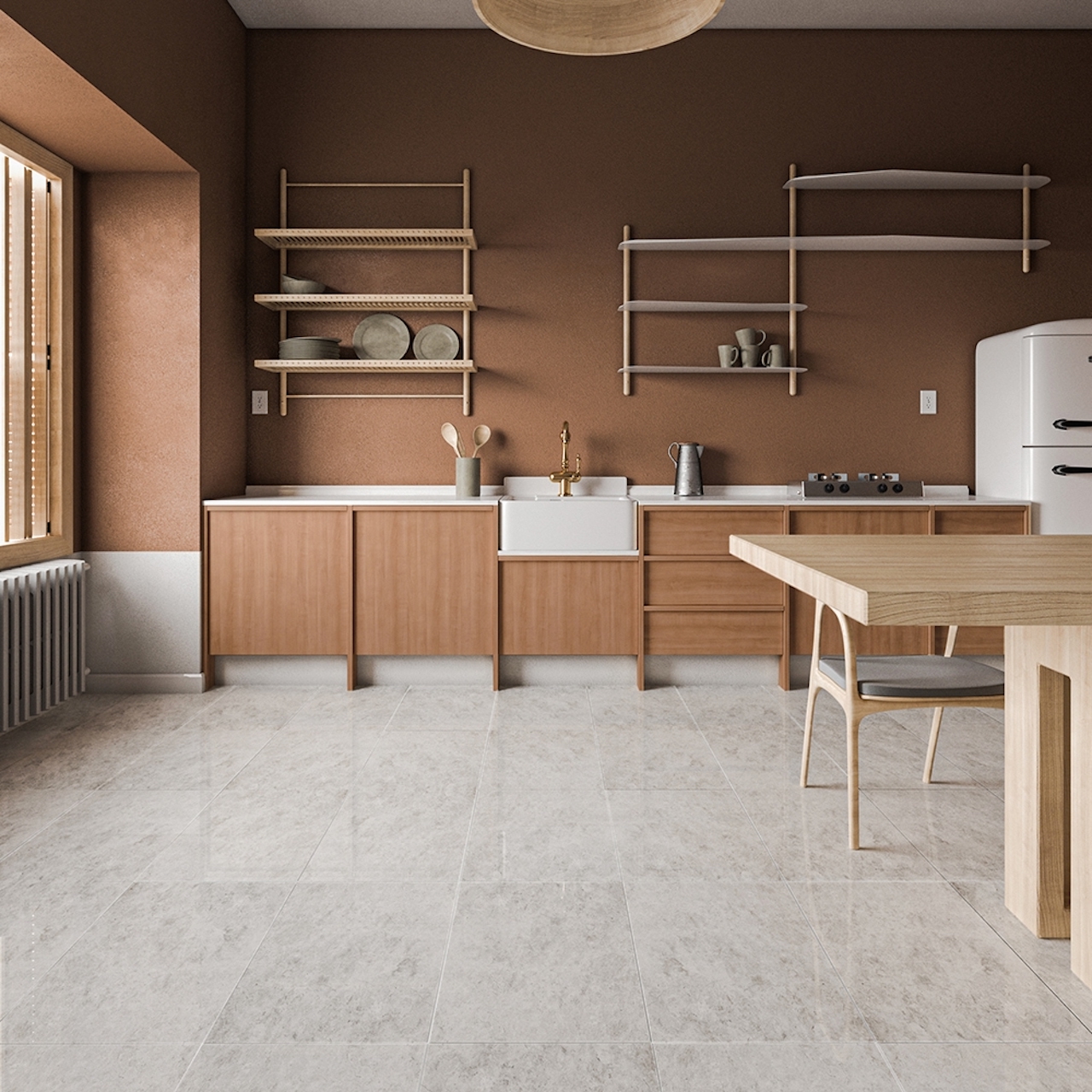
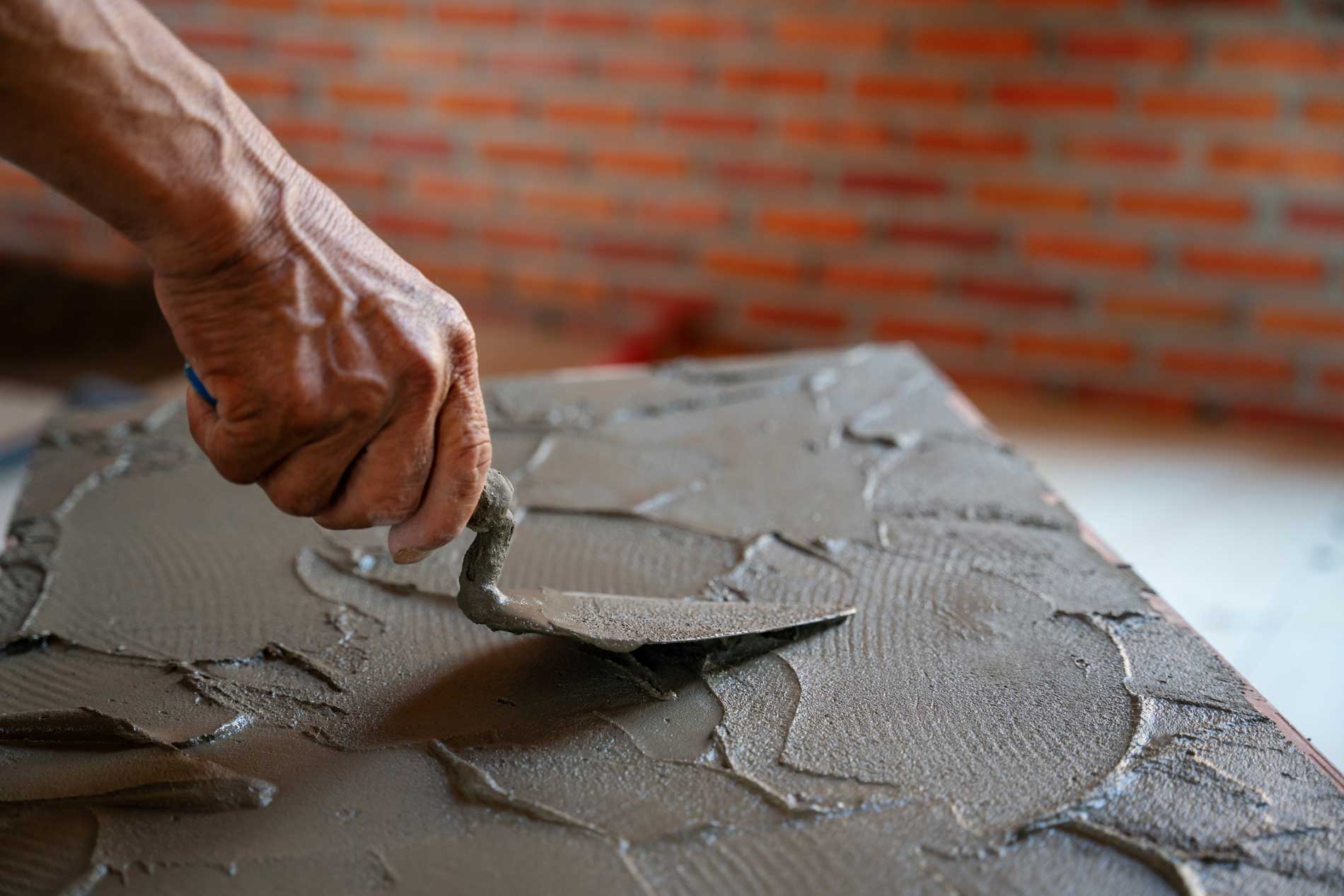

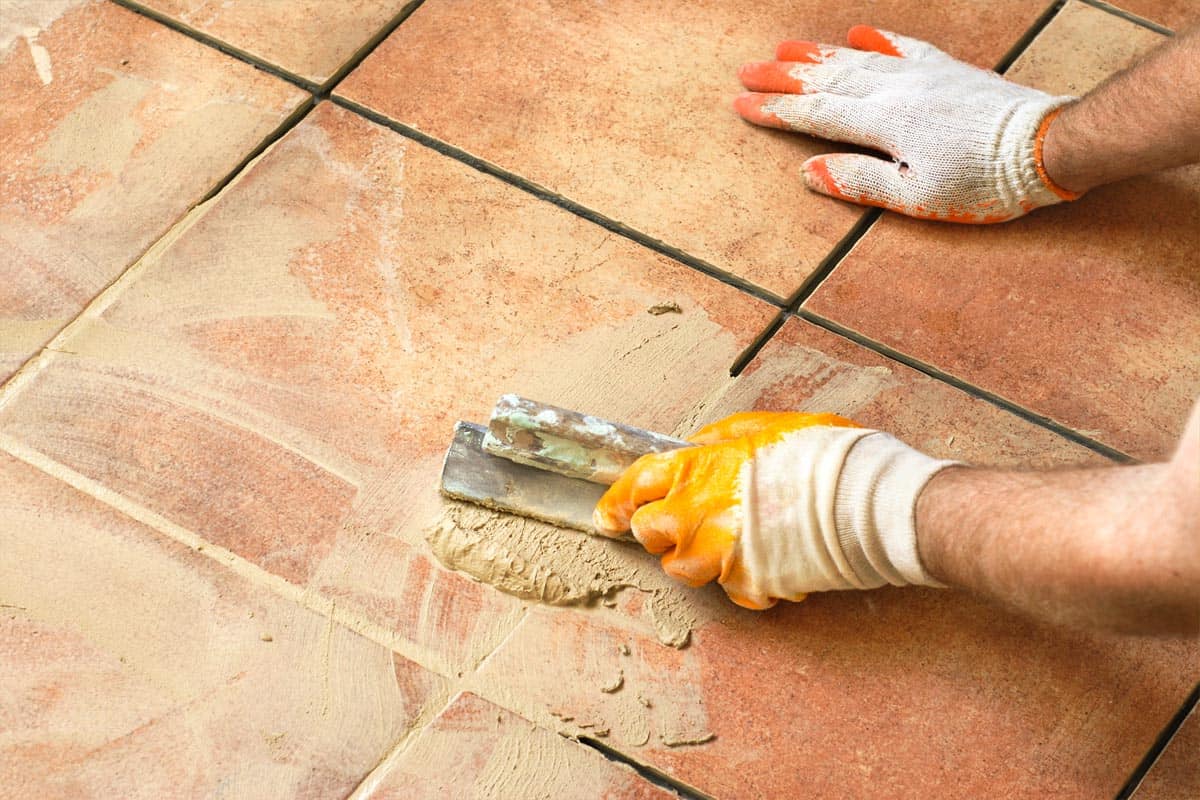
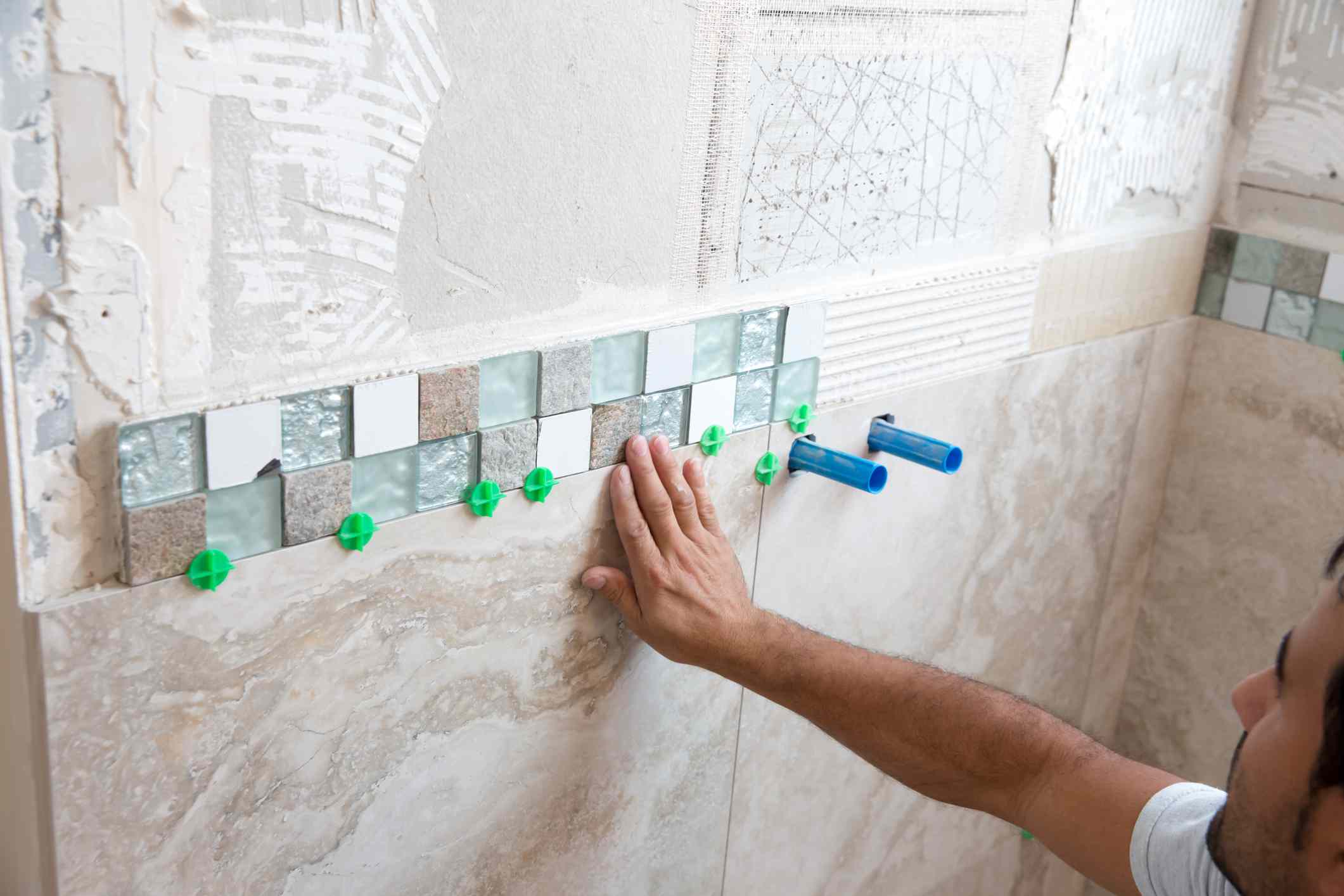

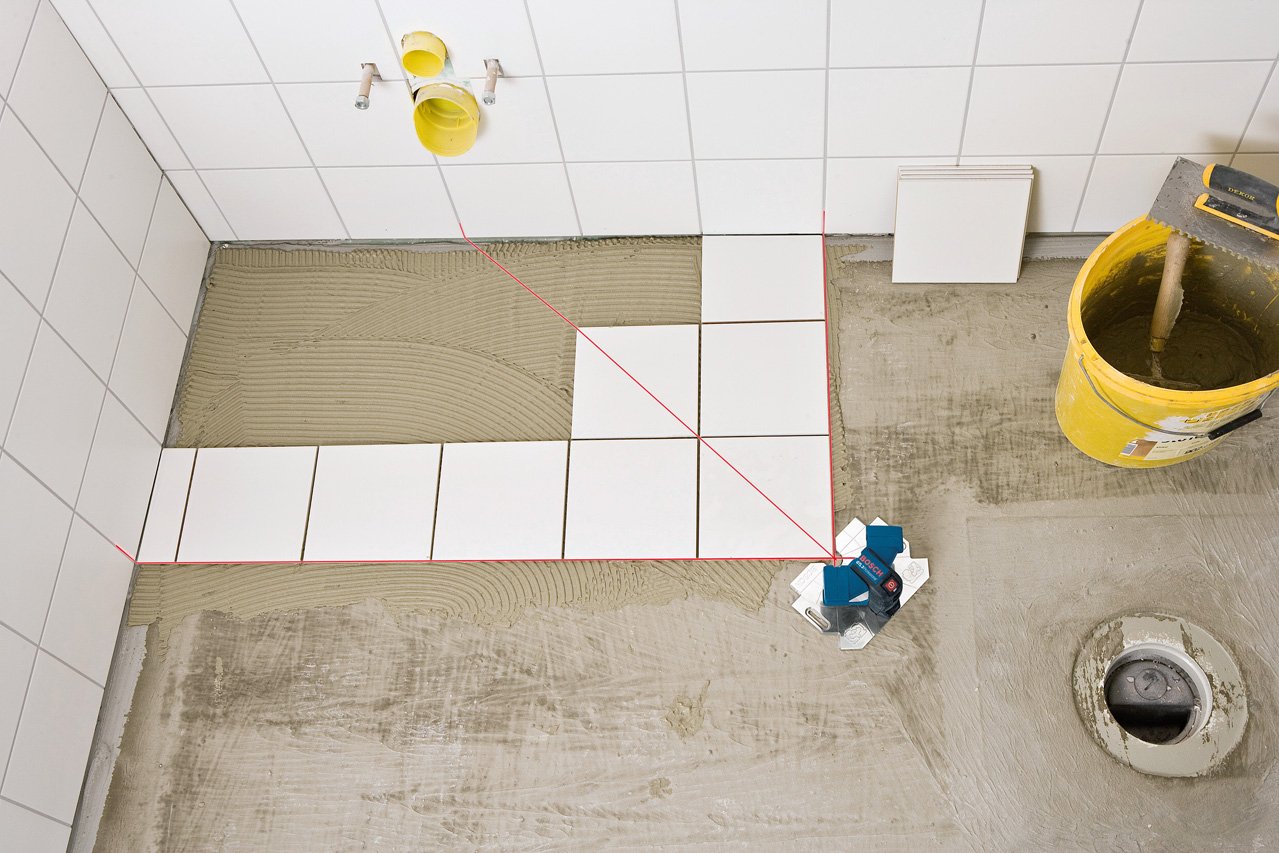
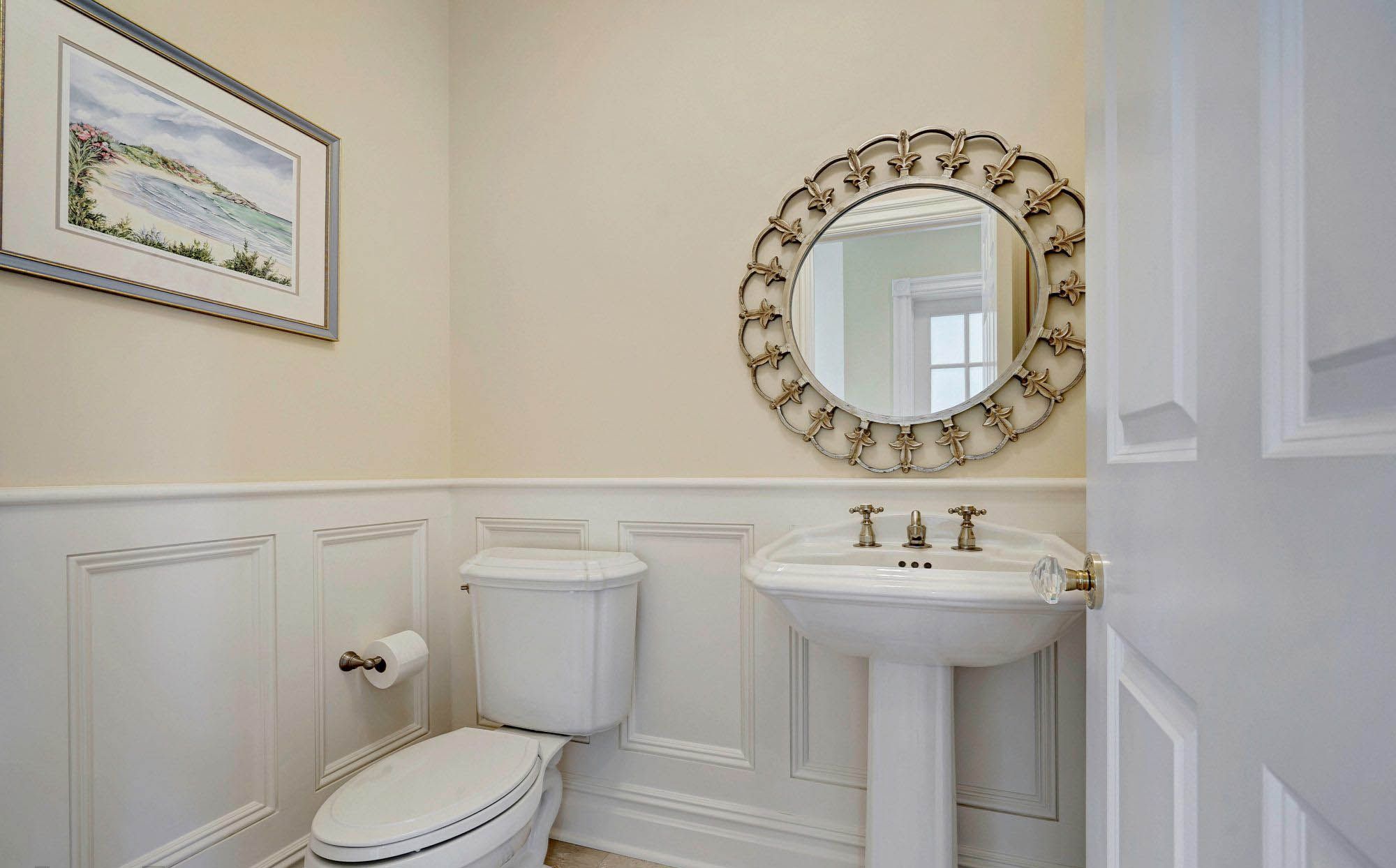
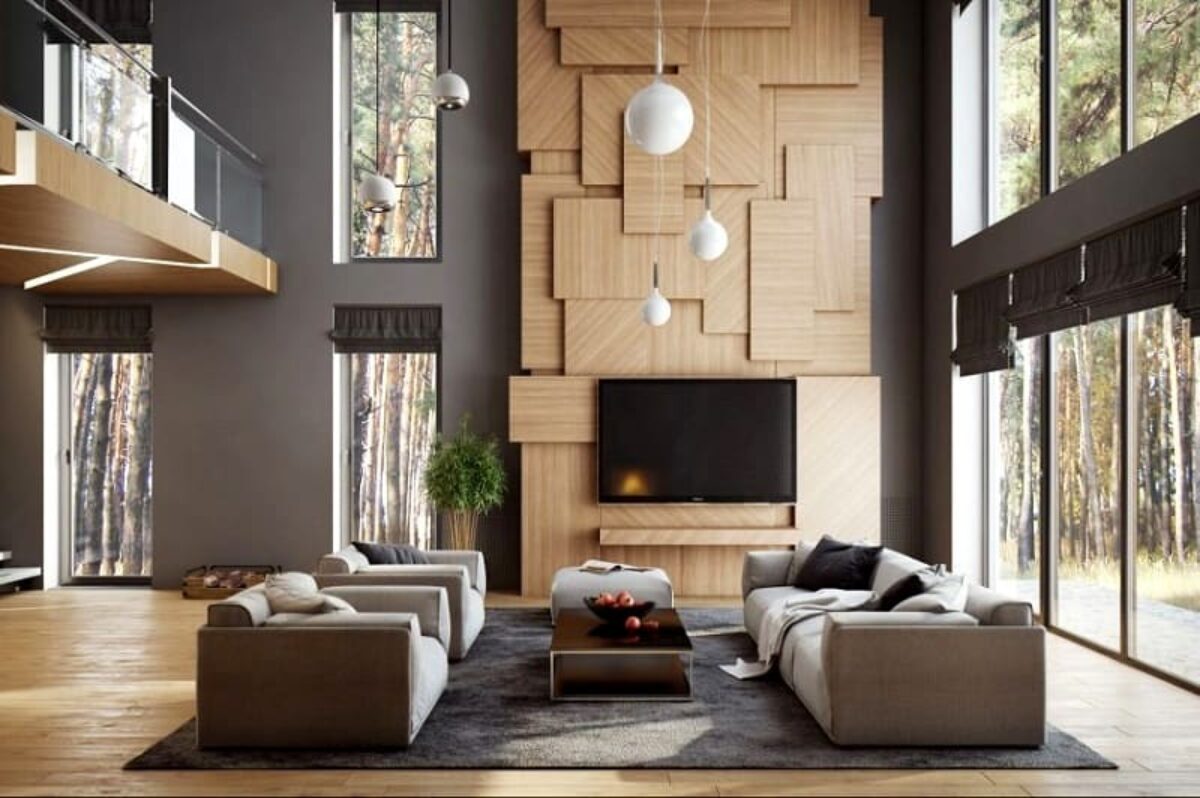
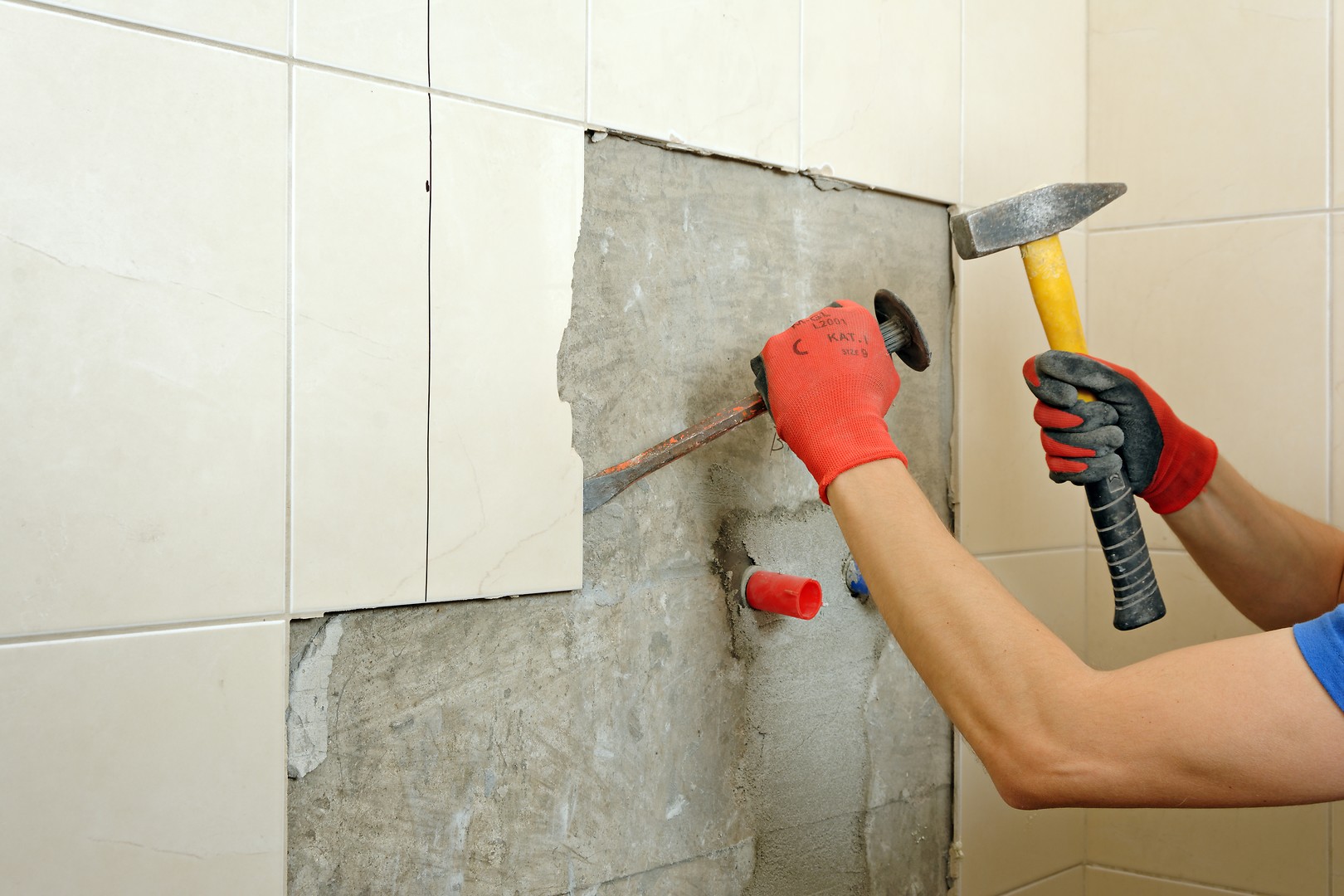
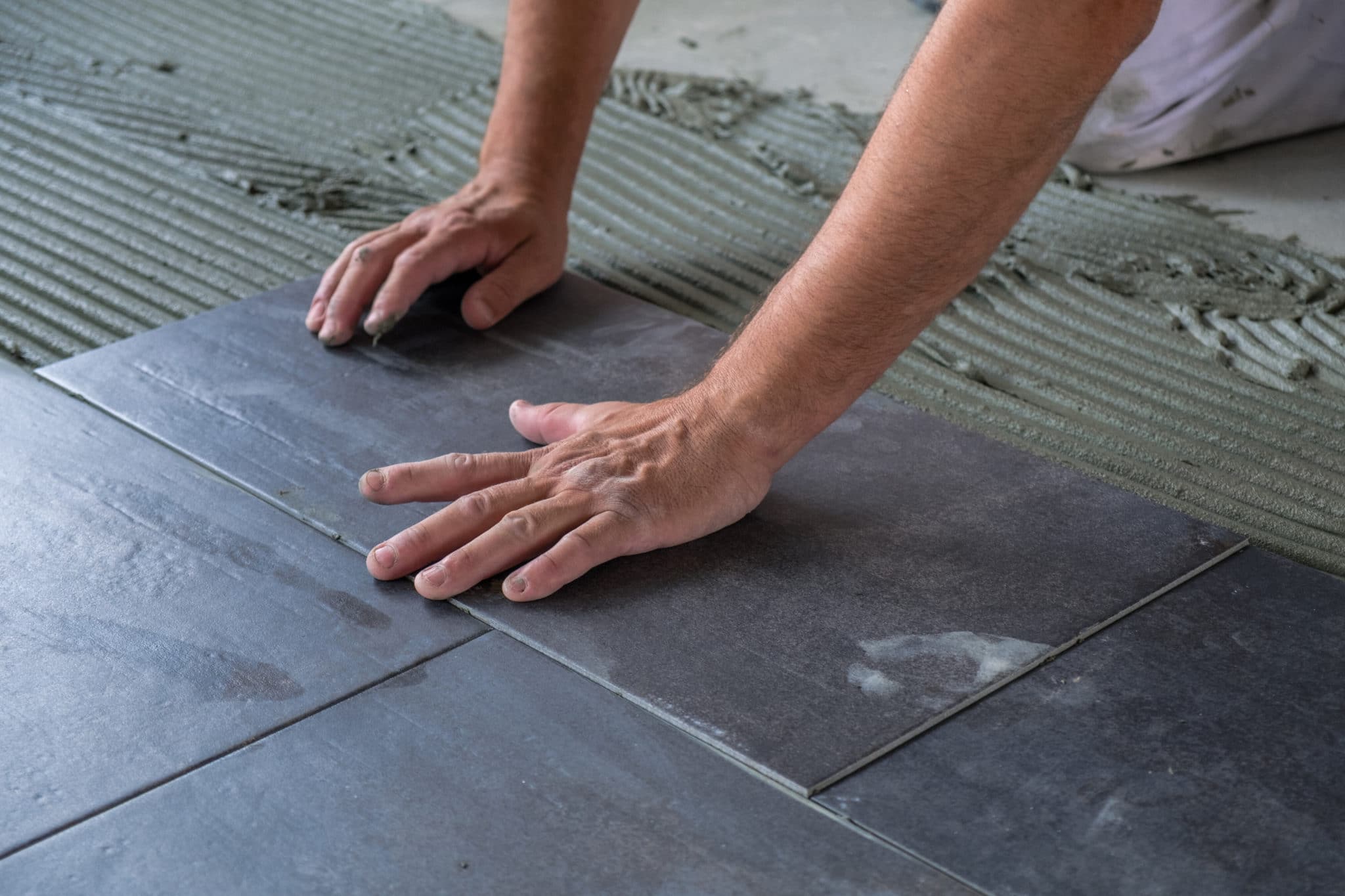
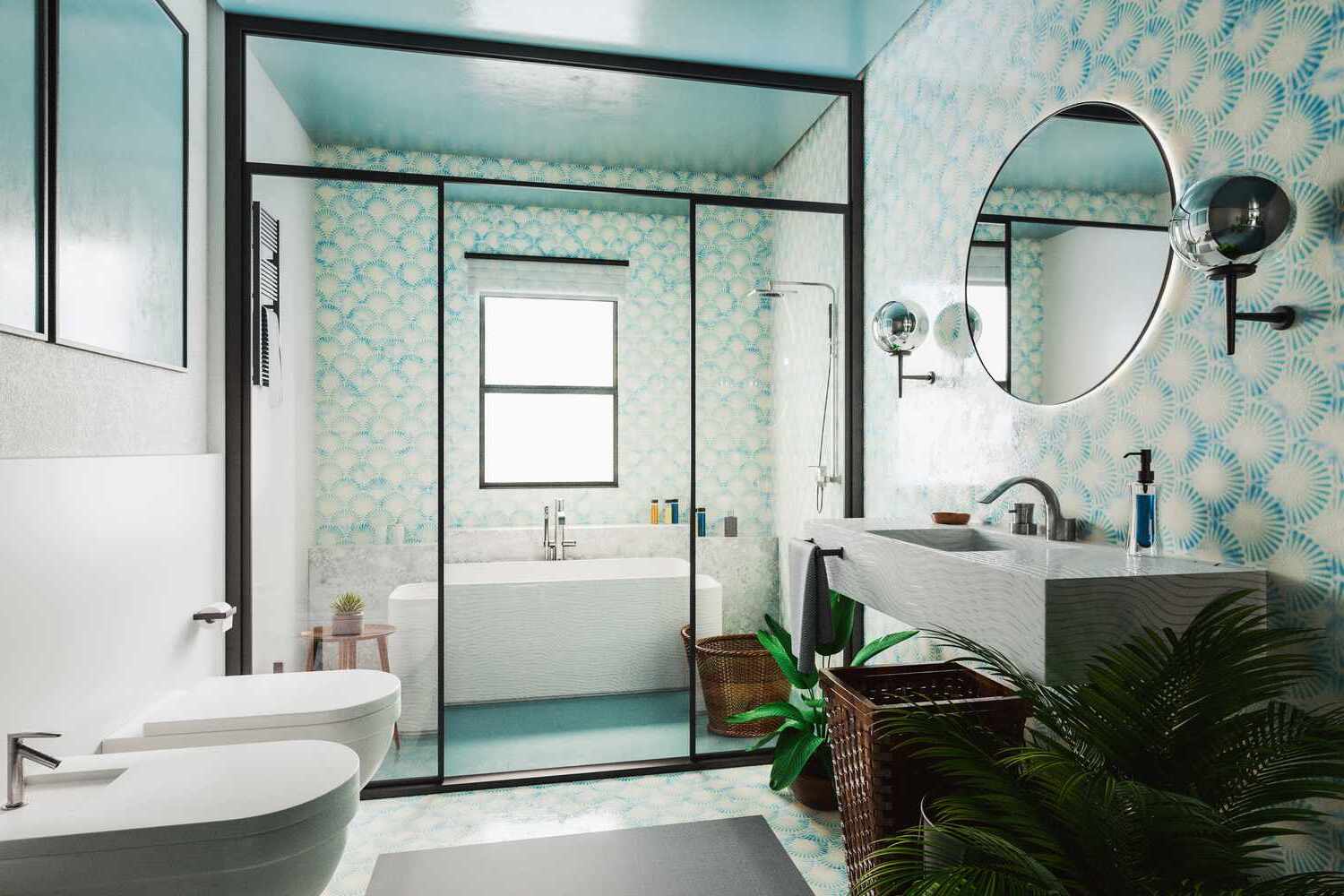

0 thoughts on “Creative Uses For Tile On Walls”